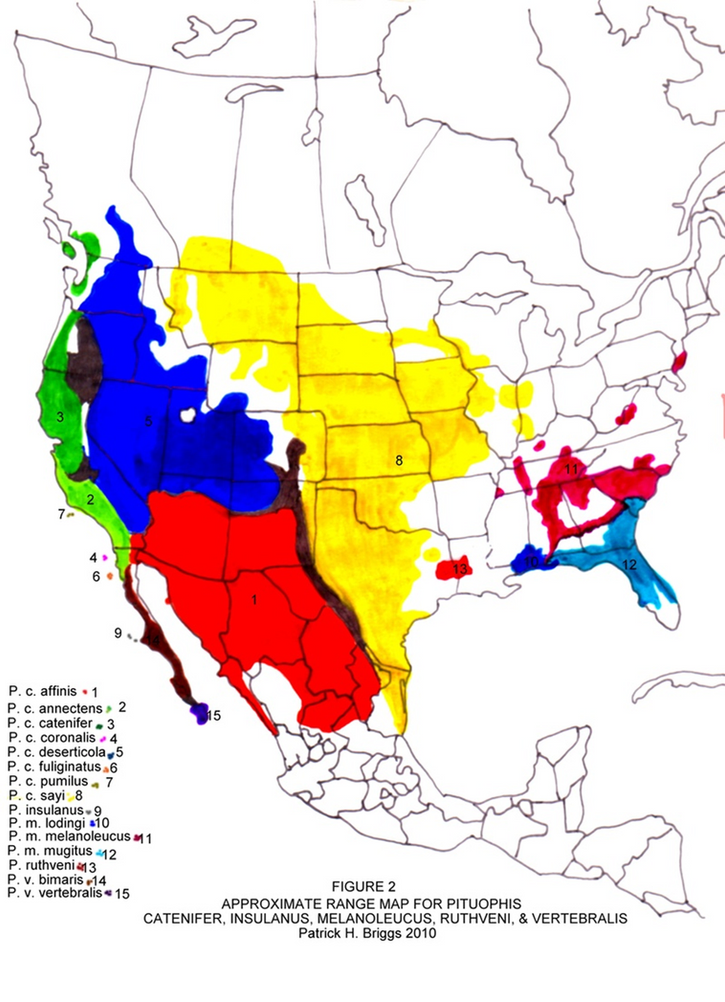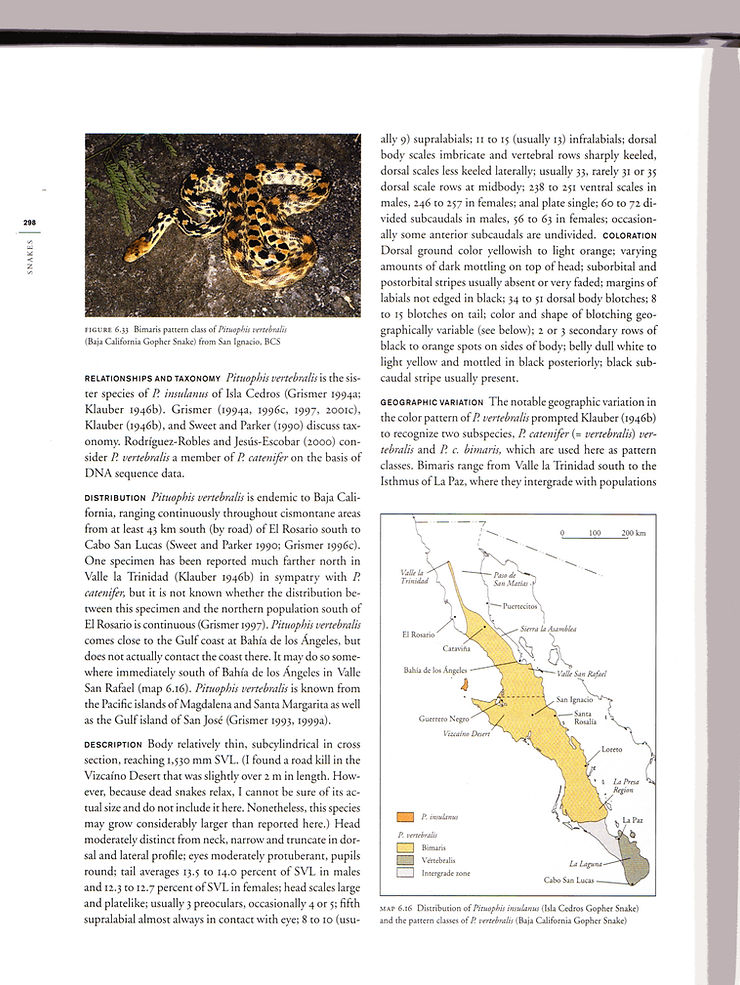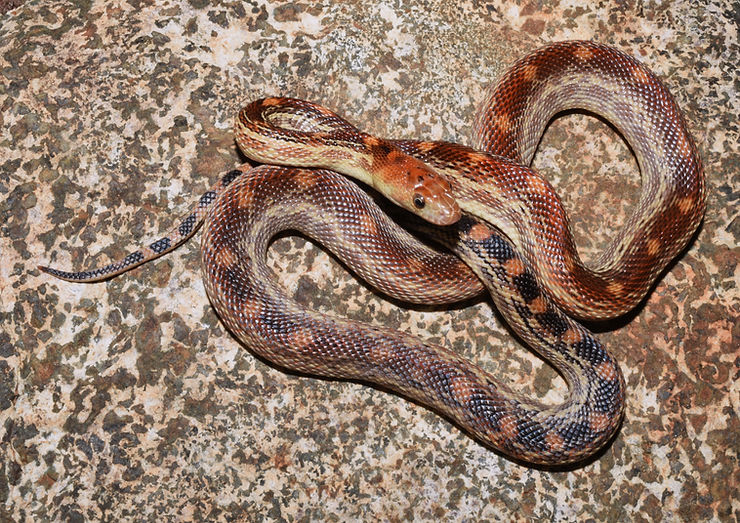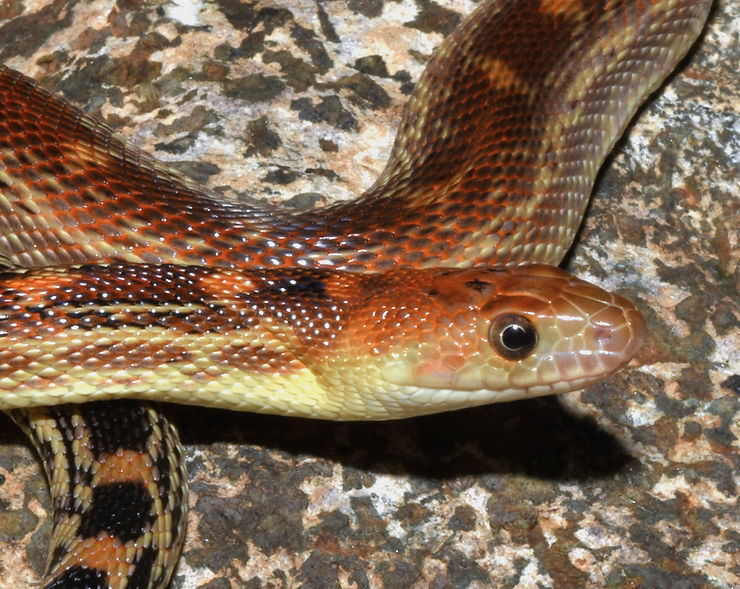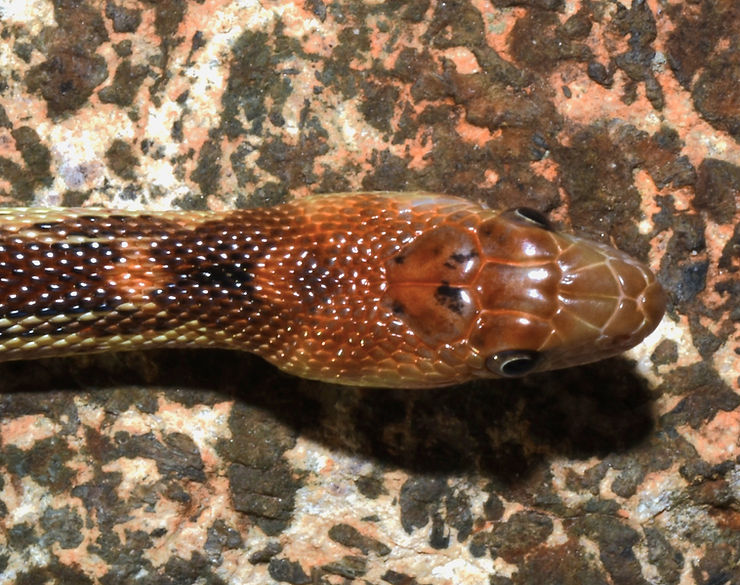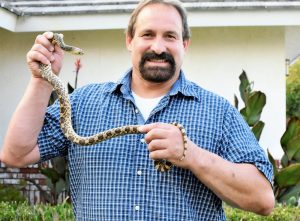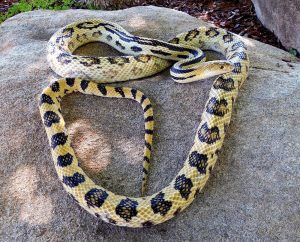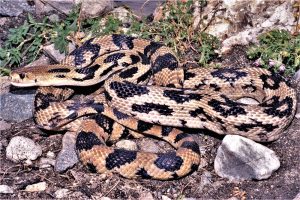Patrick Houston Briggs, Courtesy John Ginter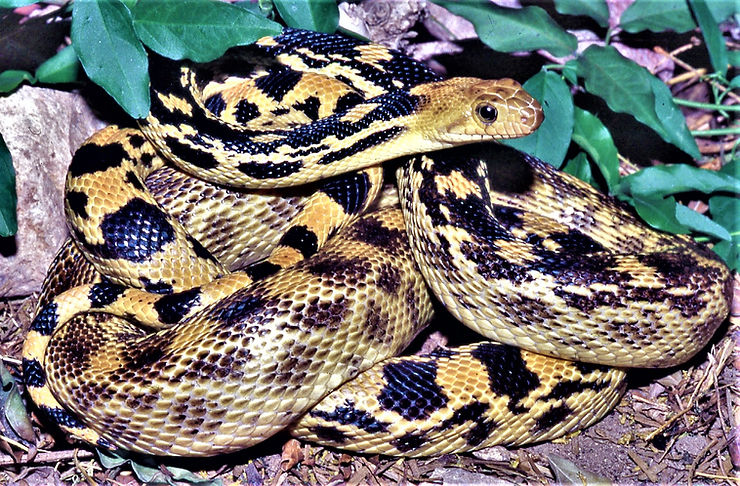
MID-BAJA CALIFORNIA GOPHER SNAKE (Blainville, 1835 for vertebralis) (Klauber, 1946 for bimaris)
Pituophis vertebralis bimaris= (Pituophis catenifer bimaris)
By Patrick Briggs
When additional material that seemed significant became available to better describe Pituophis relationships occurring in Baja California, Laurence M. Klauber, Curator of Reptiles and Amphibians for the Society of Natural History decided to resurvey the snakes of the peninsula and reexamined the collections of various institutions. As a result, he formed 4 new subspecies that he described for the Society in 1946. One of them he called Pituophis catenifer bimaris which was similar to Pituophis catenifer vertebralis.
Some authorities currently disagree on the systematics of the Baja California gopher snake forms and relegate Pituophis catenifer vertebralis and Pituophis catenifer bimaris to synonomy as one species, Pituophis vertebralis composed of two pattern classes. Lee Grismer of La Sierra University in Riverside California and his collegues also consider (vertebralis) a distinct species separate from the (annectens) race of Pituophis catenifer, because the two forms overlap in distribution for nearly 180 kilometers in the northern part of Baja California, yet show no signs of interbreeding. Interestingly, Rodriguez-Robles and Jesus-Escobar (2000) consider vertebralis to be catenifer based on DNA sequence data. On this website, until it becomes more apparent, vertebralis will be used in reference to the species and both bimaris and vertebralis will refer to subspecies.
The bimaris form is closely related to vertebralis form. Bimaris differs in at least one aspect by its black or dark brown anterior blotches versus the red or reddish brown blotches found in vertebralis. Its overall color is generally less brilliant or drab in comparison to the intense reds generally desplayed by the vertebralis form.
Description:
Pituophis vertebralis bimaris is 36-60 inches (90-178 cm). The head is wedge-shaped and moderately distict from the neck when view from above and is light brown with few marks if any, and with a postorbital stripe that is faint or gone instead of being prominent. The margins of the labials are not edged in black. The eyes are somewhat protuberant with round pupils. Subcylindrical in its cross section, the body is variably marked with 34-46 black or brown biconcave dorsal blotches within a body ground color of shades of tan, straw-yellow, or cream. L. Grismer indicates that this subspecies’ (pattern class) color intensifies with age and has more red-orange color at San Ignacio and southward. The anterior dorsal black blotches extend from one blotch to another on both sides surrounding the lighter interspaces forming enclosed round spots. There are 8-15 markings on the upper tail. The spotting along the sides are confluent and similar with those above anteriorly. They isolate the first interspaces forming light spots within a solid black band like those of most deserticola. Unlike deserticola, the spots are not dark streaked. The belly is pale from white to a faint yellow. The dark dorsal blotching is black or bolder towards the head and tail ends, while the mid-body region is often mohagany or brown and more faintly marked. Tails are longer in males which house the hemipenes. The underside of the tail exibits a black subcaudal stripe.
The Taxonimic Terms:
Herpetoculturists have been breeding these two forms of Baja California gopher snake for many years. They refer to them as “vertebralis” or “bimaris“, so many ophidian enthusiasts are already familiar with these taxonomic terms. The specific or latter portion of the scientific epethit Pituophis vertebralis gets its name VERTEBRALIS from the Latin modification of the word which means “pertaining to the back”. BIMARIS means “two seas” in reference to the Baja California peninsula located between the Gulf of California and the Pacific Ocean where this form is found.
Range:
This species with its two forms or races occurs commonly throughout the Vizcaino, Central Gulf Coast, Sierra la Laguna area, and arid to tropical areas in Baja California from 43 Kilometers by the road south of El Rosario to southern tip of the cape region of of Baja California Sur. It’s also been reported from smaller islands such as Isla San Jose of the the gulf region, Magdelena, and along the Pacific coast; Santa Margarita. Its range apparently does not include outside the central highlands into the lower Colorado Valley Region of northeastern Baja California.
Rocks and boulders with brush and Cacti, Oceanside rocky banks and boulders, Oceanside rocky banks and boulders to about 1,200′, Baja California, Mexico
Pituophis vertebralis bimaris MID-BAJA CALIFORNIA GOPHER SNAKE
Photo by Mike Enyeart Courtesy Tom Moisi (See the booklet: Amphibians and Reptiles of Baja California by RON H. MCPEAK page 80
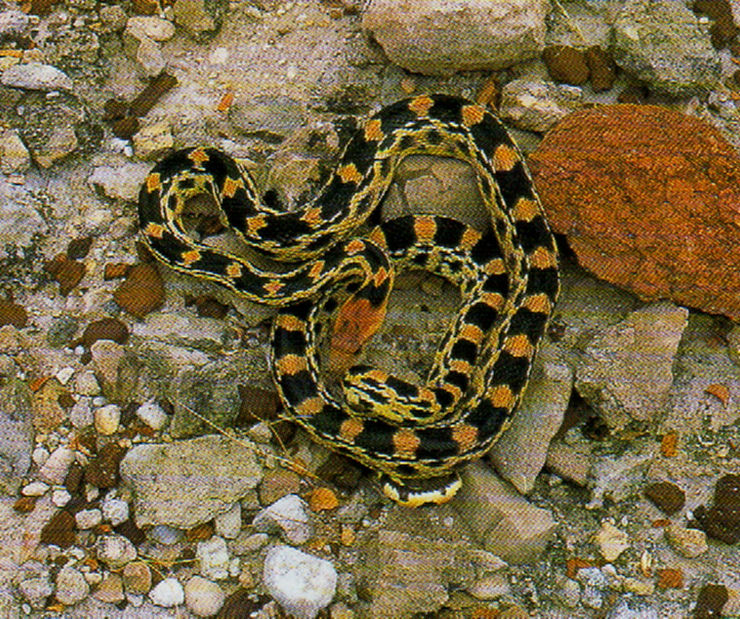
Pituophis vertebralis bimaris MID-BAJA CALIFORNIA GOPHER SNAKE
Closeup right side head study
Photo by Patrick Houston Briggs, Courtesy John Ginter 2000
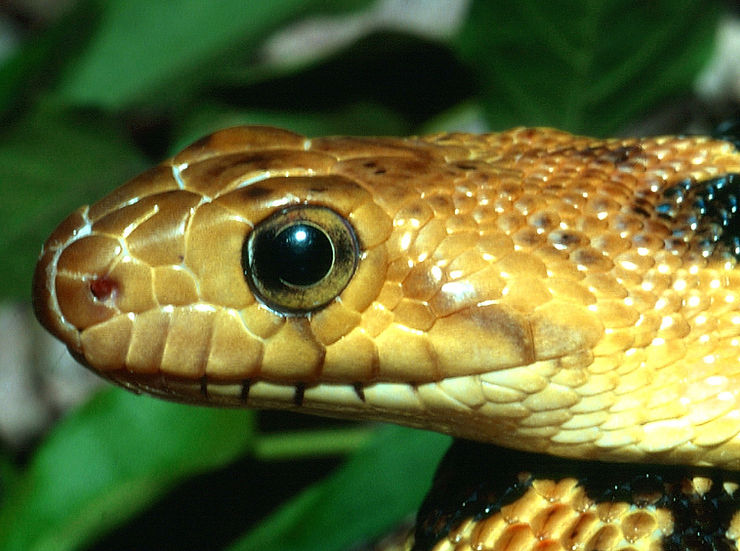
Pituophis vertebralis bimaris MID-BAJA CALIFORNIA GOPHER SNAKE
Photo by Patrick Houston Briggs, Courtesy John Ginter 2000

Pituophis vertebralis bimaris MID-BAJA CALIFORNIA GOPHER SNAKE
Intergrade Photo by Patrick Houston Briggs, Courtesy Lloyd and Sunnie Lemke
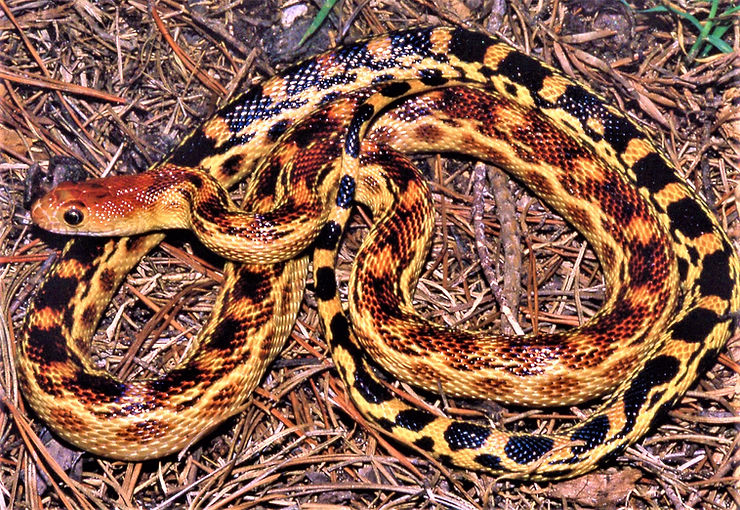
Pituophis vertebralis bimaris MID-BAJA CALIFORNIA GOPHER SNAKE
Intergrade Photo by Patrick Houston Briggs, Courtesy Lloyd Lemke
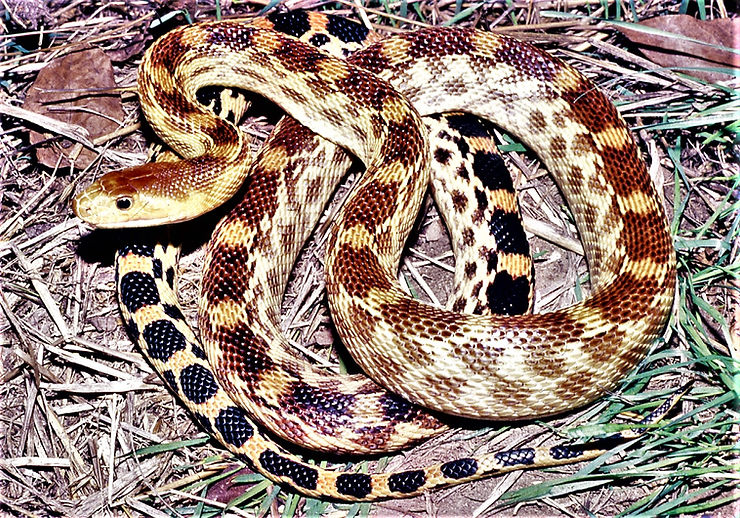
Pituophis vertebralis bimaris MID-BAJA CALIFORNIA GOPHER SNAKE
Intergrade Photo by Patrick Houston Briggs, Courtesy Lloyd Lemke
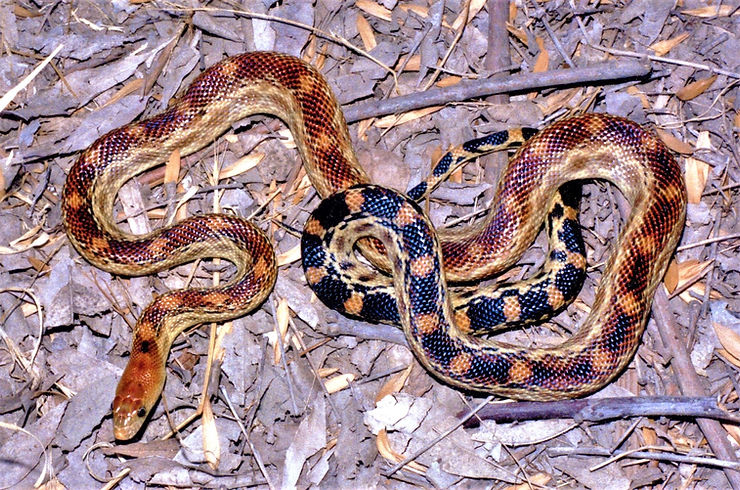
The P. v. bimaris subspecies ranges from Valle la Trinidad south to the Isthmus of La Paz. It reportedly intergrades with P. v. vertebralis between La Paz of the Cape Region and La Presa Region(L. Grismer 2002, Sweet and Parker 1990).
Food:
Pituophis vertebralis bimaris constricts feeding primarily on young or small mammals and birds. Even so, there are reports of small frog species such as Hyla regilla and lizards such as Uta stansburiana that are also prey to this species. In captivity, cannibalism has been reported and gopher snakes have been photographed eating others of their same species. Occassionally, other smaller snakes species are also eaten.
Reproduction:
Visit the San Diego Museum site for the holotype below:
SDSNH Cat. No. 32621
http://www.sdnhm.org/archive/research/herpetology/record_detail.php?herp_id=92
See this book for by Lee Grismer for some of the Baja California and Island Pituophis.
Amphibians and Reptiles of Baja California Including Its Pacific Islands In The Sea Of Cortez

Amphibians and Reptiles of Baja California Including Its Pacific Islands In The Sea Of Cortez
By Lee Grismer
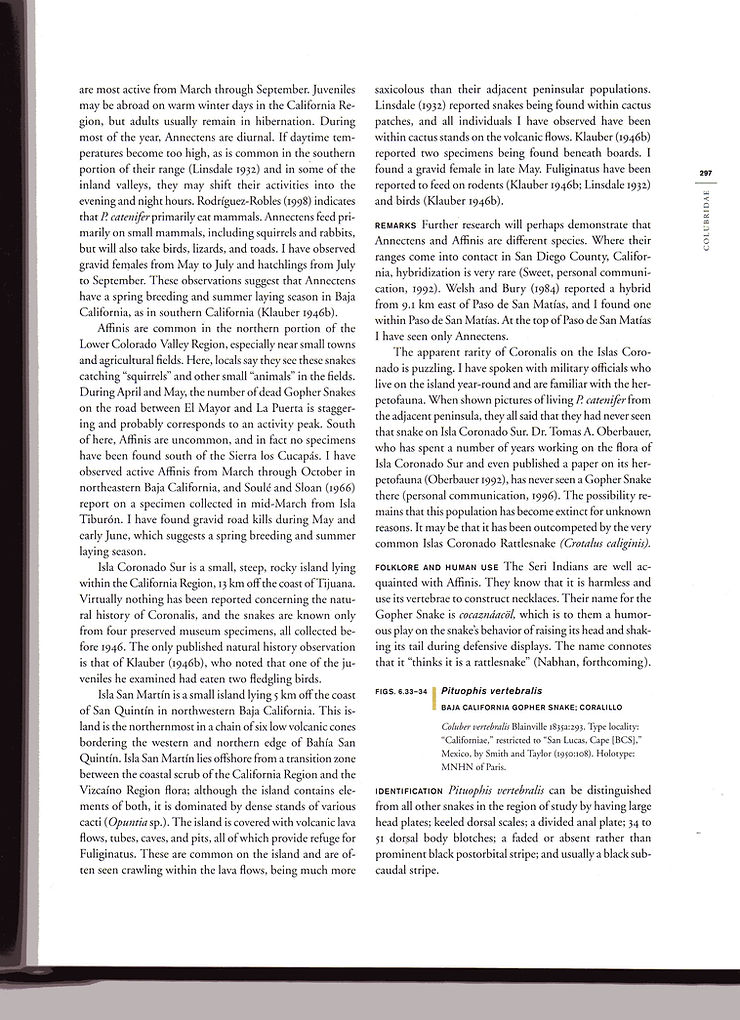
Amphibians and Reptiles of Baja California Including Its Pacific Islands In The Sea Of Cortez
See a good resource: AMPHIBIANS and REPTILES of BAJA
CALIFORNIA
INCLUDING ITS PACIFIC ISLANDS AND THE ISLANDS IN THE SEA OF CORTES
L. Lee Grismer 2002 (pages 297-300)
Pituophis vertebralis bimaris
Scutelation: Dorsal Scales: Imbricate, with vertebral rows sharply keeled
– Mid-body: 31-35 (usually 33)
– Ventrals:
– Males: 238-251
– Females: 246-257
– Subcaudals:
– Males: 60-72
– Females: 56-63
– Anal Plate: Divided
– Supralabials: 8-10 (5th usually contacts eye)
– Infralabials: 11-15 (usually 13)
– Preoculars: 2
– Postoculars: 3-5
– Prefrontals: 4 (sometimes inners fused to the outer to form 2 very wide)
– 1st Temporals: 3-6
Pituophis vertebralis bimaris MID-BAJA CALIFORNIA GOPHER SNAKE
Intergrade Photo by Patrick Houston Briggs, Courtesy Lloyd Lemke
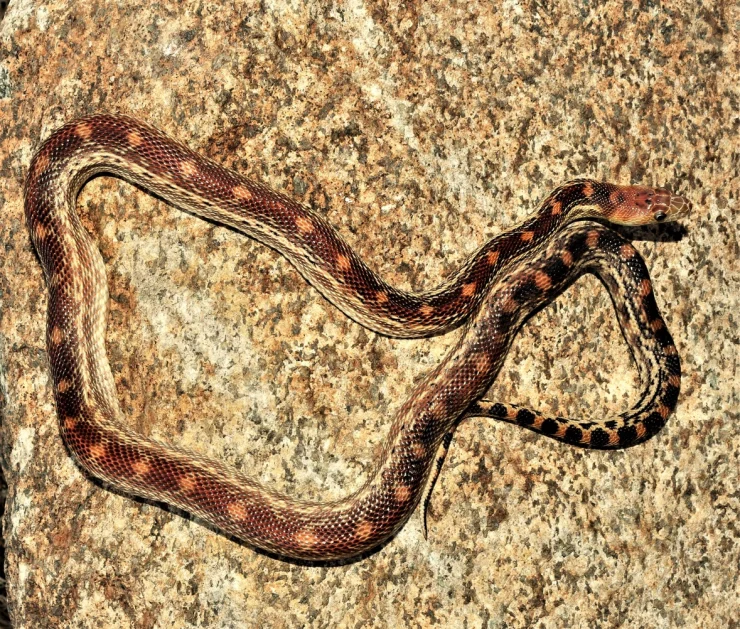
Bimaris from Lat. 24′ 21′ N. to Lat. 30′ N. (T. Moisi)
See the Baja California Gopher Snakes subspecies numbers 14 and 15 on the range map below
Patrick H. Briggs December 2010
